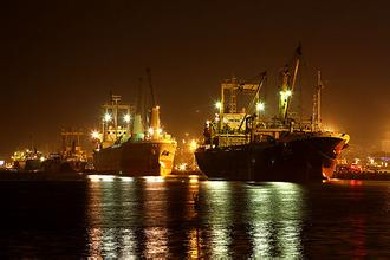"If you have to offload 4,000 TEU rather than 2,000 TEU then obviously the port stay will be longer," said Mr Fejfer, forcing terminals to improve performance whether through technological advancements, increased equipment and/or labour costs.
APMT reported a strong third quarter due in part to investment in yard improvements like its new container GPS system to trace containers position within a stack.
But costs do arise from improvements and carriers need to share the burden with port operators, said Mr Fejfer.
The supply chain as a whole is suffering from the pressure of larger containerships on intermodal services of road, rail and barge dealing with increasing box volumes.
For ports, the number of vessels physically able to berth has been reduced, with one mega ship taking up two 300-metre berths. While crane can cope with increased volumes, the number of vessels at a terminal at any one time is down.
"That puts an enormous pressure on the system and what appears to be overcapacity may, in reality, not be overcapacity and that creates a situation that we have to work together on - the shipping lines and the port operators," said Mr Fejfer.
The advent of the P3 alliance of three major carriers, APMT sister company Maersk Line, Mediterranean Shipping Co and CMA CGM, will present a major network to handle 255 vessels and around 2.6 million TEU.
APMT said the impact of the P3 network on its terminals is unknown with more than 50 per cent of its volumes generated by non-Maersk carriers.
As mature and emerging economies growth gap closes and the latter shows inconsistent growth trajectory, the container ports industry remains on course for annual growth of five per cent, lower than pre-global crisis 2009 at 10 per cent growth.
"Emerging markets will grow faster but the gap to mature markets will not be as big as it was in the last few years," Mr Fejfer said, citing India, Brazil, Russia and several African countries, the Shipping Gazette informs.








